Recent reports from the Food and Drug Administration (FDA) have suggested a link between grain-free diets and incidents of dilated cardiomyopathy (DCM). More specifically, the FDA is investigating whether grain-free diets with legumes, pulses, or potatoes are correlated with recent cases of dilated cardiomyopathy. These statements have caused some concern among dog owners about feeding their dog(s) a grain-free diet.
Our diets at FirstMate are nutritionally sound because our first objective is to meet the nutritional requirements of dogs and cats. Secondary modifications to meet the current trends in the market are not allowed to override the primary objective of good nutrition.
It is important to note that FirstMate grain-free diets have been fed to dogs for over 20 years with no reported incidents of dilated cardiomyopathy.
Research is ongoing to try to isolate the cause(s) underlying these incidents of DCM. While DCM is known to be associated with a taurine deficiency, the relationship between low taurine and DCM is not clear. Not all dogs with low taurine have DCM, not all dogs with DCM have low taurine, and not all dogs with low levels of taurine and DCM are on grain-free diets.
Although the emotional and financial impact on families with dogs that have developed DCM can be devastating, the number of dogs with DCM is very low, often breed specific, and often has a genetic basis. Dr. Aldrich, a Kansas State University pet nutritionist, stated that:
“Given the relatively small number of dogs affected so far, the issue probably does not warrant major changes to current business practices, monumental shifts in formulas, or a rush away from peas and potatoes. While a thorough review of existing nutritional platforms and some measure of validation is probably in order, panic should be avoided.”
Despite the inconclusive evidence that taurine deficiency is the problem, pet owners can be confident that FirstMate and KASIKS are providing appropriate levels of taurine for healthy dogs. Taurine occurs naturally at high levels in fish and is also present in other meats. It is virtually absent in non-meat ingredients, such as legumes, even though some of these non-meat ingredients may be high in protein. If the amount of non-meat sources of protein is high in a pet food formulation, there is a chance that the dog may not be getting the appropriate amount of taurine. Dogs can also use the amino acids cysteine and methionine to make sufficient taurine to meet their physiological requirements. FirstMate and KASIKS diets are formulated with sufficient quantities of cysteine, methionine and taurine.
Our FirstMate Grain-Free dog food has over 70% of the protein derived from a meat source, and our KASIKS formulas have over 60% of the protein derived from a meat source, thereby suppling adequate levels of these essential amino acids. We also add taurine to some formulas that include meat known to be low in taurine (such as lamb) so that all of our diets have a minimum of 0.1% taurine.
Wendy Vandersteen, Phd, MSc, BSc
Director of Research and Development
FirstMate Pet Foods
Dr. Brad Hicks, DVM
Executive Vice President
FirstMate Pet Foods


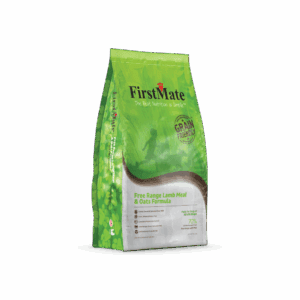
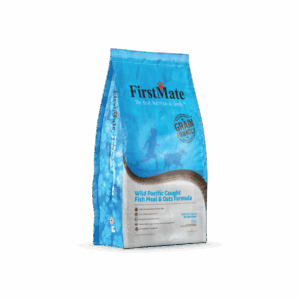
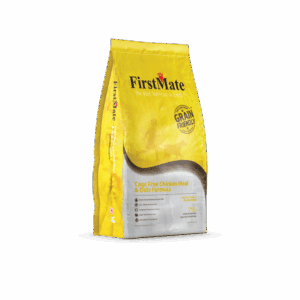

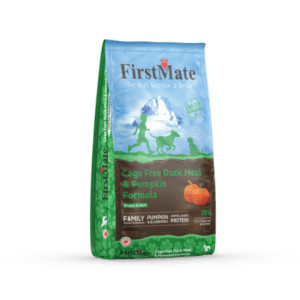

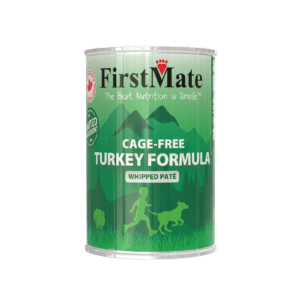

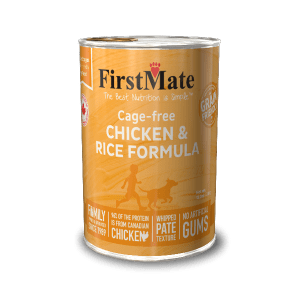
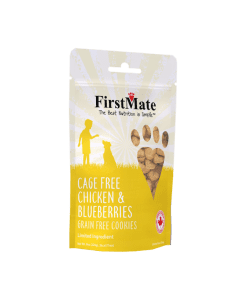
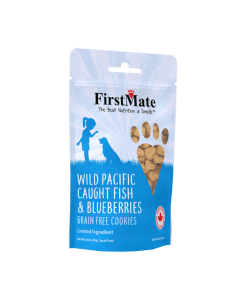
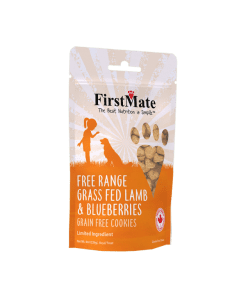
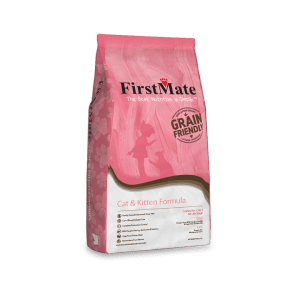
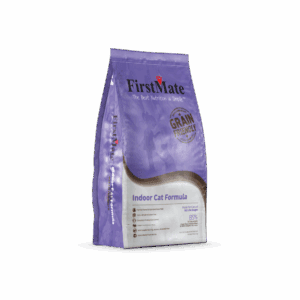

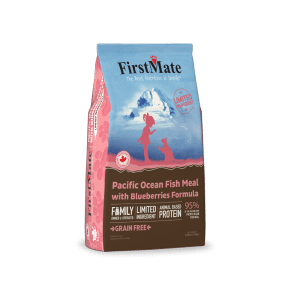
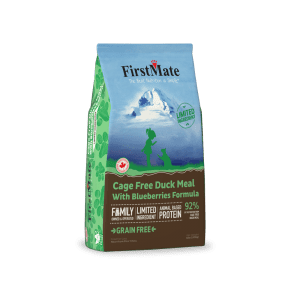
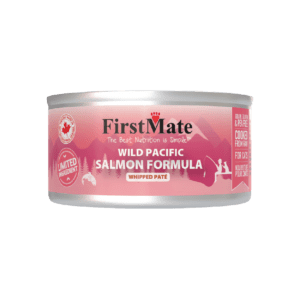
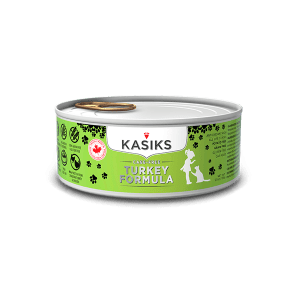
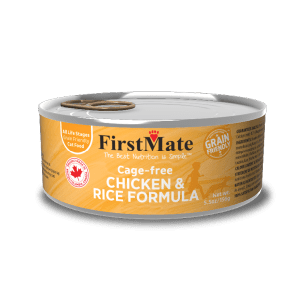


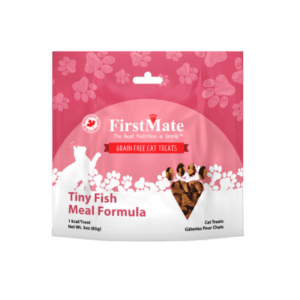
I raise Irish Setter Dogs and am concerned about DCM. I am considering switching my food to First Mate. As a PhD and retired university professor I am always interested in background research. I have spoken twice with Henry from your First Mate Company. He speaks highly of both Dr. Hicks and Dr. Vandersteen. I am pleased to see people with advanced degrees on staff. However in exploring the backgrounds of these two it is apparent that the bulk of their work is with fish.
My imagination is stretched somewhat to understand the link between fish and dogs. Will you assist by explaining this please so that I might feel that your formulations are informed and exemplary for dogs not fish. Despite my PhD, I would hesitate to claim expertise beyond my specific research field. I like what I see of your formulations but my comfort level is stressed on this matter.
Dear Dr. Higgitt:
Thank you for your interest in FirstMate products.
As Henry has mentioned, the two senior technical personal who manage formulation and safety of FirstMate products are Dr. Brad Hicks and Dr. Wendy Vandersteen. Dr. Hicks is a veterinarian with additional training in nutrition and 18 years of experience with formulating pet foods and 30 years of experience working on fish nutrition, pathology and husbandry. Dr. Hicks has focused his applied nutrition skills on pet food and fish food and because of historical interests, has been able to remain active in fish nutrition research.
Dr. Vandersteen is a molecular geneticist. Dr. Vandersteen has joined our team recently because she has the skill set we require to keep pace with the latest developments in frontline nutrition. The leading edge of nutrition research is moving rapidly toward using molecular techniques such as proteinomics and nutrigenomics to investigate the interphase between genetics and nutrients and to improve our understanding of the functioning of the microbiome and how the microbiome interacts with the body. Dr. Vandersteen has the knowledge and the experience to help us understand these leading edge developments in nutrition.
The science of nutrition is based on our understanding of biochemistry and physiology. These disciplines are part of the curriculum for both veterinary science and genetics. Dr. Hicks and Dr. Vandersteen have been well schooled in these fundamental disciplines.
In addition to Drs. Hicks and Vandersteen, the team of people working at FirstMate to provide pets with excellent and safe nutrition include people highly skilled in ensuring that the manufacturing processes employed preserve the nutritional value of the ingredients and ensures that the food is safe. Through our breeder, rescue, long-term customers and our own pets, many generations of dogs and cats have thrived on FirstMate foods.
The team at FirstMate is skilled and dedicated, providing pets with an excellent nutrition option.
We hope that this information helps to provide additional confidence in the expertise and years of experience within our company.
Most Sincerely.
FirstMate Pet Foods
Further to the discussion of DCM in dogs, while causation is not known at this time there appears to be a correlation between consuming products that include legumes, potatoes and such and low taurine levels or DCM. One hypothesis is that the legumes etc are somehow blocking either the uptake of taurine and/or the production of taurine. It appears that substituting legumes etc for grains as the
starchy glue that holds the kibble together might be suspect. I am pleased that you have a line of legume absent and grain included food and that is what I am considering feeding my dogs.
t
In reading your article, I find it interesting to see that you include taurine, but 0.1% seems awful low. Is that 0.1% per lb. or per bag. Would that be a 4 lb. bag, 8 lb. 15lb. 30 lb.? It doesn’t seem to give much information. Also why do companies stuff their foods with things like peas, potatoes and such fillers. Why not carrots. and fruits…blueberries , strawberries, or bananas?
Hello Sandi,
Thank you for reading our article and for your follow up questions. As a privately owned and operated manufacturer we take a great deal of pride in the quality, safety and performance of our products, and enjoy assisting fellow pet owners on making informed decisions about the quality of food they are feeding their cats and/or dogs.
With respect to taurine, there is no requirement for taurine in dog food diets if there is an adequate supply of the amino acids methionine and cysteine, which dogs use to produce their own taurine. Cats have a requirement of 0.2% taurine in their diets as they are incapable of producing their own taurine. Our dog kibble contains a minimum of 0.1% taurine. The percentage of taurine does not depend on the volume; it is 0.1% no matter the size of bag.
FirstMate formulates 100% nutritionally complete diets using only one protein and one carbohydrate source. This simple approach to nutrition presents an increased level of product digestibility while reducing bodily stress and the likelihood of an allergic or negative reaction.
Carbohydrates are a good source of energy, and can have protein-sparing effects. That is, if adequate carbohydrates are supplied by the diet, protein will be spared from being used for energy and can instead be used for tissue repair and growth. Furthermore, carbohydrates also supply carbon skeletons for the formation of amino acids by the body.
May of our formulas do contain blueberries, raspberries, cranberries, coconut and kale. However, in some instances we’ve kept our diets extremely limited which may make them more appropriate for dogs with food sensitivities.
We hope this helps to address your questions.
Sincerely,
Wendy Vandersteen, PhD
Director of Research and Development
I am wondering how you determine the bioavailability of your food. The “big three” food companies have a large staff of both veterinarians and nutritionists with PhDs, they conduct ongoing and detailed testing of dogs kept in a laboratory setting for that express purpose and they publish their research in recognized peer reviewed journals. How can I be certain that First Mate is at least as diligent?
Hello Dr. Higgitt,
Thank you for reaching out to us to better understand how you can trust that our foods meet the nutritional requirements of cats and dogs.
As we have indicated previously, we do not conduct testing on laboratory animals. We do evaluate our diets by working with a network of breeders, animal rescue groups, and our own pets. These long-term relationships have allowed us to see the functionality of our diets across multiple generations and with pets that have a myriad of health issues. Our diets are formulated to meet AAFCO requirements, and we regularly test our nutritional profiles to ensure guidelines are met. Ongoing nutrient evaluation of our products employs a combination of in-house and third party laboratories to ensure consistent accuracy of our nutritional profiles. To address your other question submitted through our online form, our in-house testing is done multiple times per batch to confirm proximate analysis of the formulation. We also regularly send samples to third party laboratories for salmonella, enterobacteriacea, total coliform, E.Coli, clostridium perfringens, and pesticides. We routinely test for heavy metals to ensure we are within government tolerances. We will also test for mycotoxins including vomitoxin and aflatoxin and will run more detailed analyses for nutrient content as needed.
Our foods are formulated based on scientific evidence that has been developed over many years of academic research. We do not use least cost formulations and we do not use marginal ingredients. Our diets are successful because we use top quality ingredients and we base our formulations on proven nutritional principles.
Our facilities are privately owned and we adhere to high standards in our pet and fish food manufacturing. Our facilities are organically certified, and meet CFIA, EU, USDA, BAPHIQ and HACCP certification.
FirstMate has successfully provided pet nutrition for over 20 years.
Wendy Vandersteen, PhD
Director of Research and Development
I note with interest and concern that your new line of dog treats is heavy on potatoes. The FDA has indicated that potatoes may be implicated in the current DCM issue and they advise avoiding them. What is your position on this and why?
Hello Dr. Higgitt,
Thank you for contacting us regarding your concerns about our use of potato in our new line of dog treats. Yes, these treats do include potato as the carbohydrate, but the formula is not “heavy” in potato. These treats are very high in meat protein, and the meat makes up the main ingredient and the primary source of protein.
One of the possible reasons for the link between DCM and use of high levels of ingredients such as legumes or potatoes is that too much protein may be provided by plants, instead of meat. Meat protein provides the appropriate amino acids required by dogs to produce required levels of taurine to prevent the development of DCM. All of our products are formulated with adequate meat inclusions to meet the taurine and taurine precursor requirements thus preventing the development of DCM.
These are treats and as such are meant to be provided supplemental to a dog’s regular food. They are not intended to provide complete and balanced nutrition on their own.
Sincerely,
Wendy Vandersteen, PhD
Director of Research and Development
Hello,
Wanted to know if anyone can answer these questions below please.
1. Do you employ a full time qualified nutritionist? Appropriate qualifications are either a PhD in animal nutrition or board-certification by the American College of Veterinary Nutrition (ACVN) or the European College of Veterinary Comparative Nutrition (ECVCN). What is this nutritionist’s name and qualifications?
2. Who formulates your foods and what are his/her credentials?
3. Are your diets tested using AAFCO feeding trials or by formulation to meet AAFCO nutrient profiles? If the latter, do they meet AAFCO nutrient profiles by formulation or by analysis of the finished product?
4. Where are your foods produced and manufactured?
5. What specific quality control measures do you use to assure the consistency and quality of your ingredients and the end product?
6. Will you provide a complete nutrient analysis for the dog or cat food in question? (Can they provide an average/ typical analysis, not just the guaranteed analysis which is only the minimums or maximums and not an exact number)? You should be able to ask for any nutrient – e.g. protein, phosphorus, sodium, etc. – and get an
exact number. This should ideally be given on an energy basis (i.e. grams per 100 kilocalories or grams per 1,000 kilocalories), rather than on an ‘as fed’ or ‘dry matter’ basis which don’t account for the variable energy density of different foods.
7. What is the caloric value per gram, can, or cup of your foods?
8. What kind of product research has been conducted? Are the results published in peer-reviewed journals?
If the manufacturer cannot or will not provide any of this information, owners should be cautious about feeding that brand.
B. In some countries, the AAFCO adequacy statement is included on the label. This statement confirms three important facts:
1. Whether the diet is complete and balanced. All over- the-counter foods should be complete and balanced. If the statement reads ’for intermittent or supplemental use only,’ it is not complete and balanced. That may be acceptable if it is a veterinary therapeutic diet and is being used for a specific purpose – e.g. in a case of severe kidney disease – but should be avoided in over- the-counter pet foods.
2. If the food is complete and balanced, what life stage is it intended? AAFCO provides nutrient profiles and feeding trial requirements for growth, reproduction, and adult maintenance, but not for senior/geriatric pets. A food that is formulated to meet the AAFCO profiles for all life stages must meet the minimum nutrient levels for both growth and adult maintenance.
3. If the food is complete and balanced, how did the company determine this? Labels may include one of two statements regarding nutritional adequacy.
• “[Name] is formulated to meet the nutritional levels established by the AAFCO Dog (or Cat) Food Nutrient Profiles for [life stage(s)].” (Analysis of food.)
• “Animal feeding tests using AAFCO procedures substantiate [Name] provides complete and balanced nutrition for [life stage(s)].” (Feeding trial evaluation
of food.)
Formulated foods are manufactured so the ingredients meet specified levels, either based on the recipe or on analytical testing of the finished product, without testing via feeding trials. While feeding trials help to test for the food’s nutritional adequacy, the use of feeding trials does not guarantee that the food provides adequate nutrition under all conditions. It is important to ensure that the criteria in section A also help to ensure that the food is made by a reputable and knowledgeable company with strict quality control measures.
Hello Lisa,
Thank you for your interest in our FirstMate pet food. As a privately owned and operated manufacturer we take a great deal of pride in the quality, safety and performance of our products, and are happy to provide this information for you.
Below are the answers to your questions:
1. Do you employ a full time qualified nutritionist? Appropriate qualifications are either a PhD in animal nutrition or board-certification by the American College of Veterinary Nutrition (ACVN) or the European College of Veterinary Comparative Nutrition (ECVCN). What is this nutritionist’s name and qualifications?
Our Executive Vice-President, Dr. Brad Hicks, is a veterinarian who is not board certified but has 18 years of experience in pet nutrition. He oversees all of our pet food formulations. He obtained a BSc and an MSc in Veterinary Pathology from the University of Guelph, and a DVM from the Ontario Veterinary College.
2. Who formulates your foods and what are his/her credentials?
See above.
3. Are your diets tested using AAFCO feeding trials or by formulation to meet AAFCO nutrient profiles? If the latter, do they meet AAFCO nutrient profiles by formulation or by analysis of the finished product?
Our diets are formulated to meet AAFCO requirements guidelines, and we regularly test the nutritional profiles of the finished products to ensure guidelines are met.
4. Where are your foods produced and manufactured?
Our dry products are manufactured in our Canadian Food Inspection Agency (CFIA) inspected and organically certified facility located in Chilliwack, British Columbia. Our canned products are produced in our CFIA inspected, organically certified, human grade cannery located in Port Kells, British Columbia.
5. What specific quality control measures do you use to assure the consistency and quality of your ingredients and the end product?
We have over 130 quality control checkpoints in our manufacturing process. We will routinely run full nutrient analysis, and do proximate analysis (guaranteed analysis) multiple times per batch. We routinely test our ingredients and finished products for salmonella, enterobacteriacea, total coliform, E.Coli, clostridium perfringens, and pesticides. We routinely test for heavy metals to ensure we are within government tolerances. We will also test for mycotoxins including vomitoxin and aflatoxin. All of our ingredients are inspected and approved by CFIA. We run our proximate analysis in house but all other tests are sent to third-party certified laboratories.
6. Will you provide a complete nutrient analysis for the dog or cat food in question? (Can they provide an average/ typical analysis, not just the guaranteed analysis which is only the minimums or maximums and not an exact number)? You should be able to ask for any nutrient – e.g. protein, phosphorus, sodium, etc. – and get an exact number. This should ideally be given on an energy basis (i.e. grams per 100 kilocalories or grams per 1,000 kilocalories), rather than on an ‘as fed’ or ‘dry matter’ basis which don’t account for the variable energy density of different foods.
Yes
7. What is the caloric value per gram, can, or cup of your foods?
This information is posted on our website for all formulas.
8. What kind of product research has been conducted? Are the results published in peer-reviewed journals?
If the manufacturer cannot or will not provide any of this information, owners should be cautious about feeding that brand.
We do not believe animal testing is required for our formulas because our foods are formulated based on scientific evidence that has been developed over many years of academic research. We do not use least cost formulations and we do not use marginal ingredients. Our diets are successful because we use top quality ingredients and we base our formulations on proven nutritional principles.
We do evaluate our diets by working with a network of breeders, animal rescue groups, and our own pets. These long-term relationships have allowed us to see the functionality of our diets across multiple generations and with pets that have a myriad of health issues.
B. In some countries, the AAFCO adequacy statement is included on the label. This statement confirms three important facts:
1. Whether the diet is complete and balanced. All over- the-counter foods should be complete and balanced. If the statement reads ’for intermittent or supplemental use only,’ it is not complete and balanced. That may be acceptable if it is a veterinary therapeutic diet and is being used for a specific purpose – e.g. in a case of severe kidney disease – but should be avoided in over- the-counter pet foods.
All of our diets have a complete and balanced nutritional adequacy statement as established by the Association of the American Feed Control Officials (AAFCO).
2. If the food is complete and balanced, what life stage is it intended? AAFCO provides nutrient profiles and feeding trial requirements for growth, reproduction, and adult maintenance, but not for senior/geriatric pets. A food that is formulated to meet the AAFCO profiles for all life stages must meet the minimum nutrient levels for both growth and adult maintenance.
Our diets meet the AAFCO criteria for all life stages, but only a few of our formulas specifically include the growth and reproduction of large breed dogs.
3. If the food is complete and balanced, how did the company determine this? Labels may include one of two statements regarding nutritional adequacy.
• “[Name] is formulated to meet the nutritional levels established by the AAFCO Dog (or Cat) Food Nutrient Profiles for [life stage(s)].” (Analysis of food.) • “Animal feeding tests using AAFCO procedures substantiate [Name] provides complete and balanced nutrition for [life stage(s)].” (Feeding trial evaluation of food.) Formulated foods are manufactured so the ingredients meet specified levels, either based on the recipe or on analytical testing of the finished product, without testing via feeding trials. While feeding trials help to test for the food’s nutritional adequacy, the use of feeding trials does not guarantee that the food provides adequate nutrition under all conditions. It is important to ensure that the criteria in section A also help to ensure that the food is made by a reputable and knowledgeable company with strict quality control measures.
As mentioned above, all of our products have been formulated to meet AAFCO requirements, and we routinely test our finished product to ensure these nutritional profiles are being met.
Feel free to email me directly if you have any further questions or concerns.
Wendy Vandersteen, PhD
Director of Research and Development
wendyv@firstmate.com
I am so happy to have found your company and line of products! we switched our goldendoodle over to a dry formula a year ago that did not contain the things he is allergic to….pork, barley, soy, white potatoes and kelp. There are almost zero dry foods that avoid all of these ingredients! The only food we found was a grain free variety and that’s how our goldendoodle ended up on a grain free food. Otherwise I would not have chosen grain free. And now with all the controversy surrounding DCM and Golden Retrievers possibly genetically predisposed to DCM, we want to get him off of grain free. I stumbled across the mention of your food in a goldendoodle facebook discussion about grain free diets and DCM. Someone’s goldendoodle had been found to have low taurine levels and the vet recommended your line of food along with taurine supplements for this dog. So I immediately researched your food to be super excited to see none of the products that our dog is allergic to in your grain friendly chicken meal and oats. I am preparing to order a bag! Wondering what do you recommend as the plan for switch over to the new food to avoid any bowel upsets? I still have about 13 pounds of his current kibble left. Thank you!!!
Hello, I have a 12 lb terrier mix with some food allergies and possibly environmental allergies. She gets a cytopoint allergy shot about once a month to once every 2 months. I’m sure she’s allergic to chicken and seems to have trouble with many other proteins except duck and fish. I’m transitioning her to the Wild Pacific Caught Fish Meal and oats formula this week, and I think it might work.
My questions are regarding moisture and added vitamins…. she seems to have trouble chewing the kibble and so I have been adding a little water to her food. I was thinking of trying one of the fish broth formulas from the pet store. Would that be counterproductive? ( FYI… she has regular care from a vet dentist so I’m comfortable that her teeth are not painful…. I think the kibble is just a little big).
Second, she is getting a powder called Nutrigest sprinkled on her food. This was given to me by a Vet/ Acupuncturist when my dog was still using a different food. Is there any harm in continuing to use the powder now that she is using First Mate? I also squirt a product called Nutri Oil on her food twice a day. It has Omega 3, 6, and 9’s and I started it also before the First Mate. My previous foods were also very high quality but the oil did seem to begin making her coat softer. I’m just not sure if I’m over treating her now. Thank you!
Hello Patricia,
Thank you for your support of our FirstMate pet food for your dog. We hope she is enjoying the Wild Pacific Caught Fish and Oats.
Adding water or broth to her kibble is a great way to soften the kibble if that is her preference.
The Nutrigest acts as a probiotic to support digestion. Since it was recommended by your veterinarian, there should be no harm in using it. It is possible that FirstMate is easier for your dog to digest and therefore you may not require the product, but we leave that advice for your veterinarian who has more background information on the health history of your dog. We have the same recommendation for the Nutri Oil – the extra supplementation will not be harmful to your pet, but may not be required if your dog does well with the new formula.
I hope this helps. Let us know if you have any further questions.
Sincerely,
Wendy
Wendy Vandersteen, PhD
Director of Research and Development
When you say your grain friendly lines have a minimum taurine percent of 0.1 does that include the taurine that dogs would get from synthesizing the amino acids cysteine and menthionine? Or is that 0.1 just the number of guaranteed taurine in the food +plus potential taurine supplements.
Thanks
Hello Bryce,
Thank you for your question and interest in our FirstMate pet food. Our minimum taurine inclusion refers specifically to taurine, it does not include any contribution from further synthesis of cysteine and methionine. As you identified, dogs typically produce their own taurine from cysteine and methionine, two amino acids found in meat proteins. This is why it is important to have a good quality protein source at high enough levels in the dog food.
Let us know if you have any further questions.
Sincerely,
Wendy
Wendy Vandersteen, PhD
Manager of Research and Development
My Doberman was just diagnosed with DCM. How much Taurine is in Fiirt Mate Lamb kibble?
Thank you
luckilj@comcast.net
Hello Laura,
We are sorry to hear about your Doberman’s diagnosis and appreciate your consideration of FirstMate to support your dog’s health and well-being.
Our FirstMate Australian Lamb formula has a minimum of 0.1% taurine on a dry matter basis.
Sincerely,
Wendy
Wendy Vandersteen, PhD
Manager of Research and Development
Thanks for taking the time to feild questions.
Was interested in guaranteed analysis results for first mate large breed grain friendly kibble in house vs independent testing? From my understanding the fish meal is not just one type of fish/ ratio of fish each batch made. Would be nice to see what test results First mate has vs Independent testing.
Also, do you have any literature out there showing what breeders are using this Dog food? I have been unsuccessful looking up any type of dog breeder reviewing this product.
Really like alot of aspects about the company and this testing transparency vs what existing scientific studies, so are used to formulate the given product.
Thank you so much for your time.
Hello Mo,
Thank you for your interest in our FirstMate pet food.
The fish meal used in our products is from whole wild caught herring, anchovies, and sardines. Our Guaranteed Analysis is based on compiled results from both in-house and laboratory based testing, and reflects values that accommodate any variation in our incoming ingredients. As we generate more long-term testing on our products we are better able to reflect the typical (average) values and if needed we can adjust our formula based on independent testing to ensure it meets the required Guaranteed Analysis.
We do not currently have any published literature on use of our formulas for breeder programs, but we do have customer feedback on how well it does for their dogs and puppies. Many breeders have observed positive results, but we do not share customer information. However, it is our understanding from customer interactions that a percentage of breeders and pet parents have discovered our diets after learning about us on online forums.
I hope this helps to address your questions.
Sincerely,
Wendy
Wendy Vandersteen, PhD
Manager of Research and Development
WendyV@firstmate.com Tel: (778) 628-9179
http://www.firstmate.com | http://www.kasiks.com
Celebrating Over 30 Years of Quality Pet Food Manufacturing
Find us on Twitter: @firstmatepet | @kasikspet
Instagram: firstmatekasikspetfoods